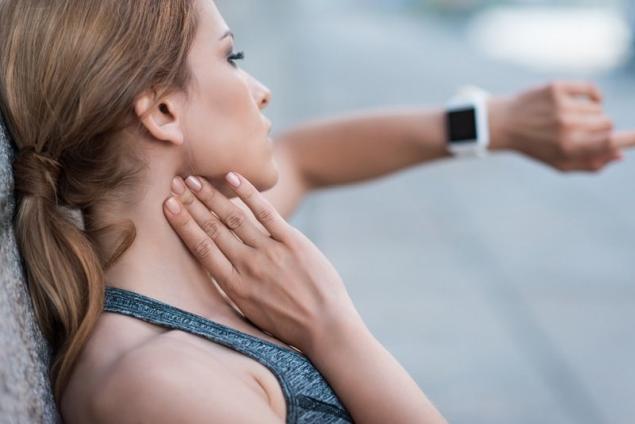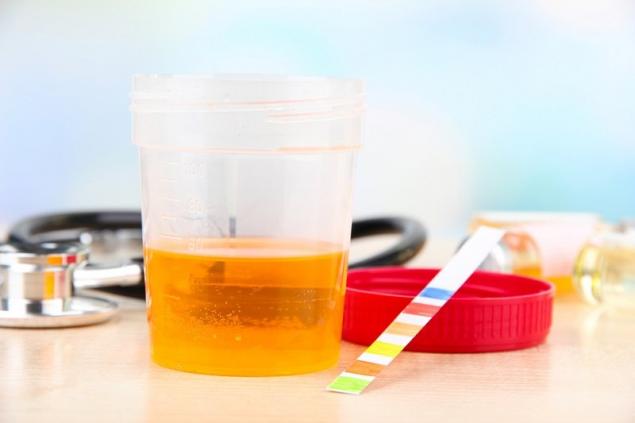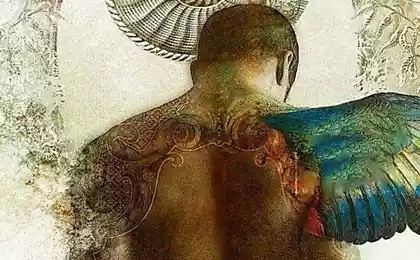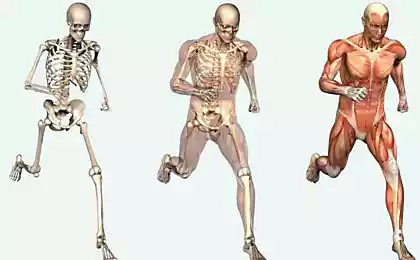202
What health indicators should be paid attention to
The preamble to the constitution of the World Health Organization defines health as “a state of complete physical, mental and social well-being, not merely the absence of disease or physical defects.”

DepositPhotos
In essence, this is the ideal we should all strive for. But how do you measure it and measure it? Perhaps in numbers on the tonometer, in kilograms, and maybe in the years lived? Or hours of hard training?
Each of the systems of our body - cardiovascular, respiratory, digestive, endocrine - has its key indicator.

DepositPhotos
In addition to the obvious (weight, appearance, physical and mental well-being), there are health, which can be measured independently or learned through tests in the clinic.

DepositPhotos
The more these constants, established by nature itself, go beyond the norm, the more serious the problems they signal. To properly regulate the work of your body, you need to learn to understand the meaning of these vital markers and take the necessary measures in time.
Blood pressure (BP) is an indicator of how much pressure in the blood arteries exceeds atmospheric pressure. This indicator is influenced by sex, age, heart rate and vascular elasticity. Blood pressure is defined by two values and is traditionally measured in millimeters of mercury.

Systolic, or upper, pressure shows the pressure in the arteries at the moment when the heart is compressed and pushes blood into the arteries. The lower indicator, or diastolic pressure, shows the pressure in the arteries at the time of relaxation of the heart muscle.
Educational medical literature suggests taking the figure of 120/80 mm Hg as an indicator of the norm. These indicators are recorded in most people aged 20-40 years. At 130/85, the pressure is slightly elevated. Normally elevated pressure is considered to be 139/89, and pathology is more than 140/90.
In all healthy adults at rest, the respiratory rate is 16-18 per minute. In newborns - 40-45 breathing movements per minute.
75837
DepositPhotos
If you take less than 14 breaths per minute, you are a well-trained and hardy person with a healthy respiratory system. If you are over 18, this is a cause for concern.
It is possible that your breathing movements do not provide your lungs with enough air and the respiratory center gives signals to replenish supplies more often than it should be normal. I need to find a reason to stop you from breathing in.
Heart rate (HR) A man’s life goes on while his heart beats. Heart rate is the main indicator of the work of our main organ.

DepositPhotos
Heart rate is a very individual indicator, it can depend on the mass of parameters: age, sex, weight, height, sports training, air temperature and even time of day.
To simplify, it is customary to measure heart rate in the morning, after waking up, provided that you did not exercise or drink alcohol the day before. A significant long-term change in heart rate can indicate heart problems.
Normally, after exercise, the heart rate within a few minutes returns to its normal values (from 60 to 90). If you notice one or more of the symptoms listed below, you should immediately contact a cardiologist.
The main constant of the hematopoietic system - hemoglobin (red respiratory pigment of human blood), carries oxygen from the respiratory organs to the tissues and carbon dioxide from the tissues to the respiratory organs. According to WHO recommendations, the following indicators are considered the norm of hemoglobin level.

DepositPhotos
Any deviations in hemoglobin in the blood from the norm are not the cause of diseases, but their consequence. And there are many reasons for violations: from malnutrition to serious diseases.
Bilirubin is a chemical pigment compound formed in the body during the breakdown of red blood cells that have completed their life cycle. The norm of total bilirubin for adult men and women is 3.4-17.1 μmol / l.

DepositPhotos
Elevated bilirubin levels are observed in violation of the liver and outflow of bile, which can be caused by hepatitis, gallstone disease, toxic liver lesions, tumors in the liver or pancreas.
The physiological norm of urine excretion is 1.5 liters per day. In a healthy person, it is light straw color, has a specific gravity of 1020 g / l, the acidity of 5.5. If protein or leukocytes appear in the urine, it is time to worry, the excretory system fails.

DepositPhotos
It is believed that the ideal weight corresponds to the one you had at 18 years old. It is desirable to keep it for life, but unfortunately, few people succeed.

DepositPhotos
Like all key indicators, the weight of a healthy person has its limits. To calculate the normal weight in adults, you can use the formula: weight = (height - 100) +/ - 10 kg. For example, if your height is 170 centimeters, then the limits of the normal weight are from 60 to 80 kg.
The fluctuation of the average indicates that you can choose for yourself the weight at which you will be most comfortable. But it is better not to go beyond the norm, since this is fraught with health problems.
Blood sugar Glucose is an energy fuel for the cells of the body, which enters the body from food consumed, in particular from one that contains carbohydrates.

DepositPhotos
Insulin is needed to absorb glucose. In a healthy person, blood sugar levels are regulated by insulin, for the production of which the pancreas is responsible. Thus, the level of glucose (sugar) in the blood is maintained within the normal range.
According to WHO recommendations, the norm of blood sugar is 3.5-5.5 mmol / l. An indicator of 5.6-6.6 is the norm after a meal, and fasting sugar levels above 6.7 almost always indicate the presence of diabetes.
PH - acid-base balance in the blood The metabolism of our body is based on acid-alkaline equilibrium (KHR), which is determined by the pH index, which is also called hydrogen. PH stands for power hidrogen, which means “the force of hydrogen”.

The pH level is normal if a person's lungs, liver, kidneys work harmoniously, which remove harmful elements, maintaining the desired acidity.
Normally, the pH of blood should be in the range of 7.32-7.42 for venous blood and 7.37-7.43 for arterial. A pH below 6.8 or above 7.8 is not compatible with life.
From the English language, the word "leukocyte" is translated as "white blood cells" (WBC). In adults, normal indicators of leukocytes in the blood are in the range of 4-10 x 109 / l.

DepositPhotos
Elevated white blood cell count is called leukocytosis and can be caused by acute inflammation and bacterial infections, systemic connective tissue diseases, initial stages of radiation sickness, malignant tumors.
For the norm, we have an average body temperature of 36.6 degrees. But few people know that there are temperature limits to this norm.

DepositPhotos
According to international medical statistics, most people have a constant temperature between 36.3 and 37.0 degrees.
An increase in body temperature is a reaction to various disorders in the body. In other words, it is a sign that the body has recognized the disease and began to fight it.
Cholesterol was once considered an undeniable evil and was blamed for many different health problems. Today, doctors recognize that cholesterol is vital as a building block for the formation of cells and nerve tissue.

DepositPhotos
There is a common belief that high cholesterol occurs only in those people who eat a lot of fatty foods. Nothing like that. 80% of cholesterol is produced in the body (in the liver, in other tissues) and only 20% comes from food.
Depending on the composition of compounds that include cholesterol, it is customary to divide it into "bad" (LDL) and "good" (HDL). If there is a lot of LDL cholesterol in the blood, then it violates the internal membranes of blood vessels, accumulates in them and forms sclerotic plaques.
A high concentration of HDL, in contrast, reduces the risk of atherosclerosis and cardiovascular disease. For adults, the level of total cholesterol is considered good not higher than 5.18 mmol / l, and for children - 4.4 mmol / l.
Now, knowing normality And by looking at your analysis, you'll have an idea of what's going on in your body.
Blood pressure, heart rate and the number of respiratory movements per minute should be monitored every day, and the rest of the tests should be taken at least once every six months.
Every person had to donate blood for analysis more than once. Only a doctor can read the analysis accurately, but knowing the indicators of the norm, you can also decipher it.
In Germany, every citizen who has reached the age of 47 is required to have a colonoscopy. Editorial "Site" I am convinced that it is not colonoscopy that should be feared, but rash rejection of it!
Urine analysis allows you to obtain valuable information about the state of the human body and timely identify various pathologies. As it turned out, a lot of information about the state of health can be obtained only by looking more closely at the color of urine.

DepositPhotos
In essence, this is the ideal we should all strive for. But how do you measure it and measure it? Perhaps in numbers on the tonometer, in kilograms, and maybe in the years lived? Or hours of hard training?
Each of the systems of our body - cardiovascular, respiratory, digestive, endocrine - has its key indicator.

DepositPhotos
In addition to the obvious (weight, appearance, physical and mental well-being), there are health, which can be measured independently or learned through tests in the clinic.

DepositPhotos
The more these constants, established by nature itself, go beyond the norm, the more serious the problems they signal. To properly regulate the work of your body, you need to learn to understand the meaning of these vital markers and take the necessary measures in time.
Blood pressure (BP) is an indicator of how much pressure in the blood arteries exceeds atmospheric pressure. This indicator is influenced by sex, age, heart rate and vascular elasticity. Blood pressure is defined by two values and is traditionally measured in millimeters of mercury.

Systolic, or upper, pressure shows the pressure in the arteries at the moment when the heart is compressed and pushes blood into the arteries. The lower indicator, or diastolic pressure, shows the pressure in the arteries at the time of relaxation of the heart muscle.
Educational medical literature suggests taking the figure of 120/80 mm Hg as an indicator of the norm. These indicators are recorded in most people aged 20-40 years. At 130/85, the pressure is slightly elevated. Normally elevated pressure is considered to be 139/89, and pathology is more than 140/90.
In all healthy adults at rest, the respiratory rate is 16-18 per minute. In newborns - 40-45 breathing movements per minute.
75837
DepositPhotos
If you take less than 14 breaths per minute, you are a well-trained and hardy person with a healthy respiratory system. If you are over 18, this is a cause for concern.
It is possible that your breathing movements do not provide your lungs with enough air and the respiratory center gives signals to replenish supplies more often than it should be normal. I need to find a reason to stop you from breathing in.
Heart rate (HR) A man’s life goes on while his heart beats. Heart rate is the main indicator of the work of our main organ.

DepositPhotos
Heart rate is a very individual indicator, it can depend on the mass of parameters: age, sex, weight, height, sports training, air temperature and even time of day.
To simplify, it is customary to measure heart rate in the morning, after waking up, provided that you did not exercise or drink alcohol the day before. A significant long-term change in heart rate can indicate heart problems.
Normally, after exercise, the heart rate within a few minutes returns to its normal values (from 60 to 90). If you notice one or more of the symptoms listed below, you should immediately contact a cardiologist.
- After even small physical exertion (for example, climbing stairs), the heart rate for a long time does not return to normal.
- You regularly feel an increased heartbeat.
- When measuring the pulse is often above 100-120 beats per minute or, conversely, below 50.
- You feel constant fatigue, weakness or dizziness.
The main constant of the hematopoietic system - hemoglobin (red respiratory pigment of human blood), carries oxygen from the respiratory organs to the tissues and carbon dioxide from the tissues to the respiratory organs. According to WHO recommendations, the following indicators are considered the norm of hemoglobin level.

DepositPhotos
- For children from six months to 5 years - 110 g / l and above.
- For children 5-11 years old - 115 g / l or more.
- For children 12-14 years, as well as girls and women (15 years and older) - 120 g / l and above.
- For men (15 years and older) - 130-160 g / l.
Any deviations in hemoglobin in the blood from the norm are not the cause of diseases, but their consequence. And there are many reasons for violations: from malnutrition to serious diseases.
Bilirubin is a chemical pigment compound formed in the body during the breakdown of red blood cells that have completed their life cycle. The norm of total bilirubin for adult men and women is 3.4-17.1 μmol / l.

DepositPhotos
Elevated bilirubin levels are observed in violation of the liver and outflow of bile, which can be caused by hepatitis, gallstone disease, toxic liver lesions, tumors in the liver or pancreas.
The physiological norm of urine excretion is 1.5 liters per day. In a healthy person, it is light straw color, has a specific gravity of 1020 g / l, the acidity of 5.5. If protein or leukocytes appear in the urine, it is time to worry, the excretory system fails.

DepositPhotos
It is believed that the ideal weight corresponds to the one you had at 18 years old. It is desirable to keep it for life, but unfortunately, few people succeed.

DepositPhotos
Like all key indicators, the weight of a healthy person has its limits. To calculate the normal weight in adults, you can use the formula: weight = (height - 100) +/ - 10 kg. For example, if your height is 170 centimeters, then the limits of the normal weight are from 60 to 80 kg.
The fluctuation of the average indicates that you can choose for yourself the weight at which you will be most comfortable. But it is better not to go beyond the norm, since this is fraught with health problems.
Blood sugar Glucose is an energy fuel for the cells of the body, which enters the body from food consumed, in particular from one that contains carbohydrates.

DepositPhotos
Insulin is needed to absorb glucose. In a healthy person, blood sugar levels are regulated by insulin, for the production of which the pancreas is responsible. Thus, the level of glucose (sugar) in the blood is maintained within the normal range.
According to WHO recommendations, the norm of blood sugar is 3.5-5.5 mmol / l. An indicator of 5.6-6.6 is the norm after a meal, and fasting sugar levels above 6.7 almost always indicate the presence of diabetes.
PH - acid-base balance in the blood The metabolism of our body is based on acid-alkaline equilibrium (KHR), which is determined by the pH index, which is also called hydrogen. PH stands for power hidrogen, which means “the force of hydrogen”.

The pH level is normal if a person's lungs, liver, kidneys work harmoniously, which remove harmful elements, maintaining the desired acidity.
Normally, the pH of blood should be in the range of 7.32-7.42 for venous blood and 7.37-7.43 for arterial. A pH below 6.8 or above 7.8 is not compatible with life.
From the English language, the word "leukocyte" is translated as "white blood cells" (WBC). In adults, normal indicators of leukocytes in the blood are in the range of 4-10 x 109 / l.

DepositPhotos
Elevated white blood cell count is called leukocytosis and can be caused by acute inflammation and bacterial infections, systemic connective tissue diseases, initial stages of radiation sickness, malignant tumors.
For the norm, we have an average body temperature of 36.6 degrees. But few people know that there are temperature limits to this norm.

DepositPhotos
According to international medical statistics, most people have a constant temperature between 36.3 and 37.0 degrees.
An increase in body temperature is a reaction to various disorders in the body. In other words, it is a sign that the body has recognized the disease and began to fight it.
Cholesterol was once considered an undeniable evil and was blamed for many different health problems. Today, doctors recognize that cholesterol is vital as a building block for the formation of cells and nerve tissue.

DepositPhotos
There is a common belief that high cholesterol occurs only in those people who eat a lot of fatty foods. Nothing like that. 80% of cholesterol is produced in the body (in the liver, in other tissues) and only 20% comes from food.
Depending on the composition of compounds that include cholesterol, it is customary to divide it into "bad" (LDL) and "good" (HDL). If there is a lot of LDL cholesterol in the blood, then it violates the internal membranes of blood vessels, accumulates in them and forms sclerotic plaques.
A high concentration of HDL, in contrast, reduces the risk of atherosclerosis and cardiovascular disease. For adults, the level of total cholesterol is considered good not higher than 5.18 mmol / l, and for children - 4.4 mmol / l.
Now, knowing normality And by looking at your analysis, you'll have an idea of what's going on in your body.
Blood pressure, heart rate and the number of respiratory movements per minute should be monitored every day, and the rest of the tests should be taken at least once every six months.
Every person had to donate blood for analysis more than once. Only a doctor can read the analysis accurately, but knowing the indicators of the norm, you can also decipher it.
In Germany, every citizen who has reached the age of 47 is required to have a colonoscopy. Editorial "Site" I am convinced that it is not colonoscopy that should be feared, but rash rejection of it!
Urine analysis allows you to obtain valuable information about the state of the human body and timely identify various pathologies. As it turned out, a lot of information about the state of health can be obtained only by looking more closely at the color of urine.























